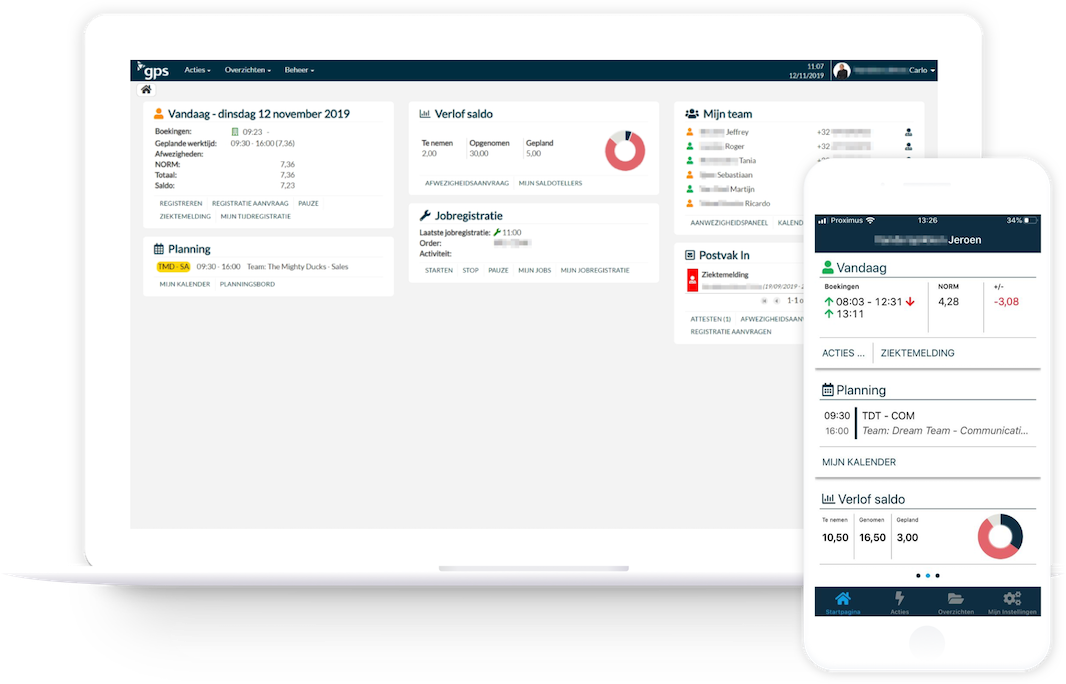
In the year 2000, GPS was the first on the market to launch an Employee Self Service time registration system. We did this in order to be able to better inform employees about their leave of absence, performance and so on. Over the years, the ESS was continuously expanded with new functions such as a sickness report, attestation management and an attendance panel. Personnel planning was also added to the Employee Self Service in 2008. Today, almost every new customer chooses the Employee Self Service linked to time registration because of transparency and enormous time savings for the HR department.
Employee Self Service in a nutshell
The Employee Self Service linked to time registration gives employees access to relevant HR information. This gives them insight into performance, planning and absences. In addition, various HRM processes, such as leave requests, registration requests, sickness reports, timesheets, … also run via the Employee Self Service.
Because both manual and clerical workers have to work with it smoothly, the Employee Self Service is very intuitive and available via the web browser and smartphone (Android and iOS).
Benefits of Employee Self Service
Using the Employee Self Service brings several advantages. Both for the employees and the personnel department.
- Employees attach more and more importance to the transparency of the company towards them. This creates a feeling of trust.
- Thanks to the Employee Self Service you can save time in various ways.
- Digitization means that everything is centralized in one system, so you can quickly find all the information you need.
- Due to the automation, the error checking has already been done. As a result, you do not lose time on incorrect requests or things that are already in order.
- Because your employees can consult certain information themselves, they no longer have to burden the HR department or head of department with it.
- Thanks to decentralised management, you can spend certain tasks on heads of department.
- Via the Employee Self Service you can also register the working hours. Both the start and end times of a day, as well as the hours per order or activity. This not only results in financial savings. But it also gives you more control over your performance. Because this way, mobile employees or teleworkers can also register their working hours.
Employee Self Service at Inside Blinds
Because Inside Blinds was confronted with a lot of manual work to calculate performance, Saskia Ginneberge, HR manager at Inside Blinds, went looking for user-friendly cloud software for time registration. She found this at GPS. For Inside Blinds, this also meant the end of the many Excel files and loose papers. Finally, thanks to the Employee Self Service, it was possible to restructure the organization chart by working with department heads.
Does all this sounds like a fairytale and does your company want to enjoy all these benefits? Then request your free demo here!